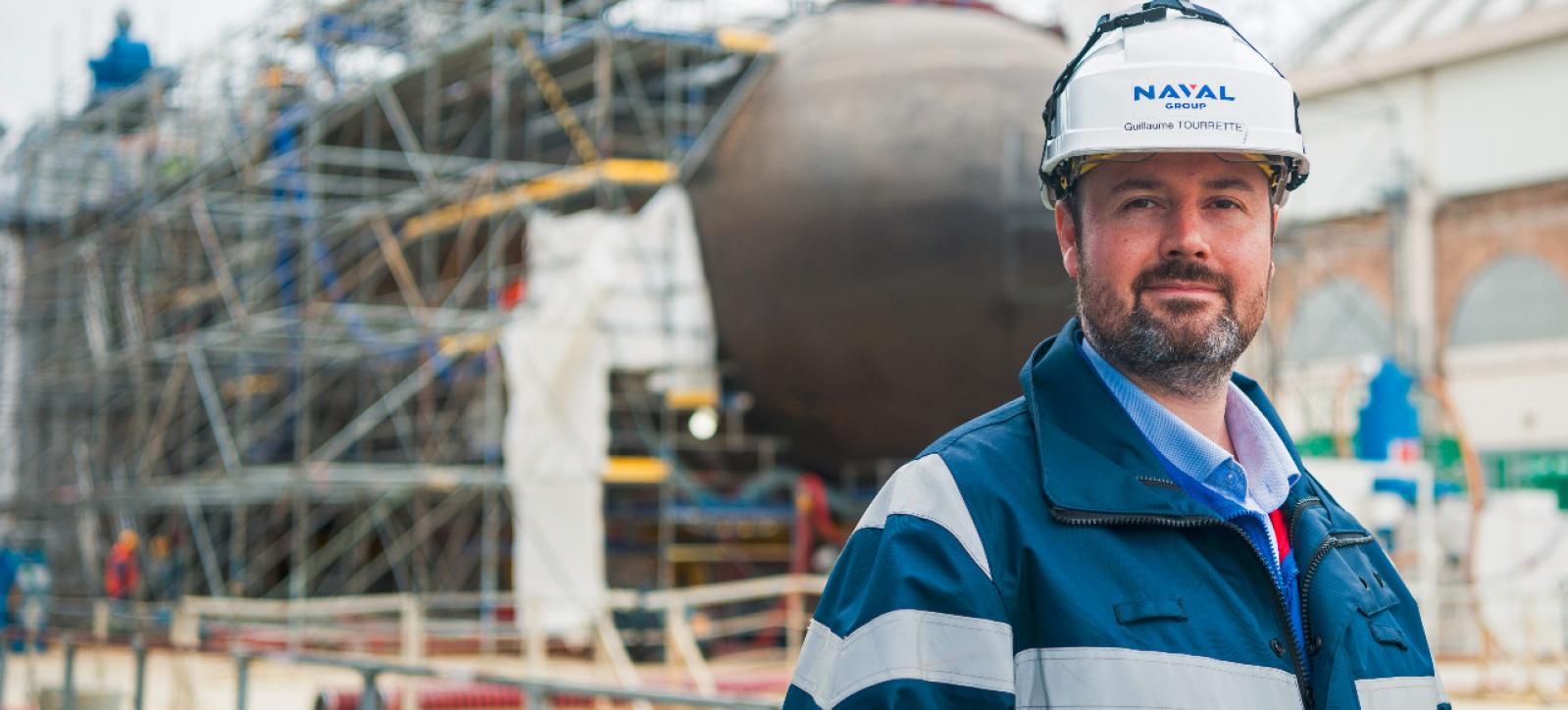What is your role in the Perle programme?
Guillaume Tourrette: Just after the fire on the Perle, I was appointed to represent the site of Cherbourg and participate in the feasibility analysis of its repair, notably in terms of production engineering of the solution. The teams analysed five options, including the hybridisation option that was ultimately selected.
To assess the cost and lead time of each option, I used my previous experience in upstream production engineering - from hull manufacture at the Legris workshop and integration work at the Laubeuf shipyard - as well as my participation in the repair and overhaul of the ballistic nuclear submarine (SSBN) Le Triomphant, and its adaptation for the M51 on which I worked in Brest for eight months with teams from the Services division.
When repair work started on the Perle in October 2020, I was appointed Project Leader for the work to be carried out on the launching facility (DME) in Cherbourg, and I formed a team to prepare the project (drawing up the schedule, organising the project, starting procurement and services, etc.) until December.
My job is to coordinate the activity as a whole and manage the various participants, so that we can meet the performance objectives in terms of cost, quality and lead time.
Shipyard work began on 7 January 2021 when the Perle was installed on the DME, followed by the Saphir on 17 February. The project will end in June when the reconstituted Perle SSN and the Q899 (ex-Saphir SSN) are launched.
What progress had been made up until April?
Guillaume Tourrette: The most symbolic step was probably moving the submarine sections between the Impératrice platform and the Cachin zone. These six movements had to be carefully calibrated due to space restrictions, demanding a lot of preparation. The sections were moved using the dual walking beam system over six consecutive days and enabled alignment of the fore section of the Saphir with the aft section of the Perle then closing joining.
This closing operation is more than just welding, which took place over the first ten days of April: it is a team effort that required meticulous preparation and involved a wide range of expertise, illustrating its complexity. It has been carefully defined and will take two months in all. The inspections in May – in particular radiography of the weld - will check that there are no defects in the weld seams and that the hull geometry has been preserved, to confirm the compliance of the operation.
This phase will be followed by closing all the hull sleeves then the leak tests which will allow us to launch then release the Perle.
How have you been feeling during this project?
Guillaume Tourrette: I found it highly motivating to be able to live every stage of the project from the feasibility studies to demonstration of the solution to the customer, preparation and then execution, all within just one year.
I am lucky to have an excellent team and we are proud to be part of this exceptional project. It has been a real challenge and everything has gone to plan so far, in spite of a very tight schedule and the coactivity imposed by the repair and overhaul operations, all being carried out at the same time.
The Toulon and Cherbourg teams cooperate intelligently and all incidents are managed quickly to ensure our schedule commitments are met, since this is also crucial challenge for the Barracuda programme: the DME must be freed up by the end of June to prepare it for the transfer of the Dugay-Trouin - the second SSN in the series - which is planned for this autumn.



